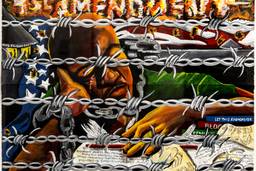Author Sara Paretsky broke ground in contemporary mystery writing with the 1982 debut of V.I. Warshawski, a tough-talking, hard-boiled and independent female detective. Through her character, Paretsky opened the door for female protagonists and readers, showing that the genre wasn’t just for men anymore. More than 20 years later, mystery fans can walk into any bookstore and see female authors and characters dominating the shelves.
Throughout a dozen books, Warshawski has become a character that millions devotedly follow. Much of this loyalty comes from her strengths, flaws and vulnerabilities — characteristics with which readers readily identify. In the course of her investigations and butt kicking, Warshawski gets hurt, becomes sick, makes bad decisions, gets cranky, worries about bills and most of the time doesn’t care or have time for makeup or fine clothes.
“I created her very much because I was tired of the way women were depicted in the traditional American noir form, “ Paretsky says. “Either existing only in the body or being chaste … and therefore unable to solve the most fundamental problems of their lives — or being sexually active and therefore being wicked.”
Paretsky’s quest to redefine crime writing has extended beyond the page. Understanding the barriers that women authors face to get their work recognized, in 1986 Paretsky helped found Sisters in Crime (www.sistersincrime.org). The 3,600-member organization helps female mystery writers gain the attention of publishers, critics and readers and “combat[s] discrimination against women in the mystery field.”
While many writers of the crime genre claim their stories are ripped from the headlines, Paretsky imbues her character with her own feminist sensibilities and anxieties. This gives her work a more “real” quality than much fiction, and even mainstream news media, often commands.
In previous books, her characters confronted the Holocaust, homelessness and corruption in the prison system. And although she didn’t set out to write an overtly political book this time, her latest novel, Blacklist, takes place soon after the U.S. invasion of Afghanistan.
Paretsky originally intended to write about a crime committed during the McCarthy era but was pulled toward the overwhelming parallels between that time and the current political climate. With America still reeling from 9/11, in Blacklist Warshawski confronts the USA Patriot Act, hides a young fugitive accused of terrorism and ducks the FBI.
“I started writing it right about the time of the attack on the World Trade Center,” Paretsky explains. “I was pretty much like everyone else in the country, in a state of shock and numbness and having a hard time getting moving. So I started a story that would let me retreat a little from the present … but as I was working on the novel, of course, the events of the day were not remote.”
During the last half of the novel, Warshawski contends with the state threatening her constitutional rights — searching her home, tapping her phone and following her car, all without a warrant. As the P.I. evades the FBI, readers are confronted with the ways the government can invade one’s privacy — as much in fiction as in real life.
“When my computer crashed and I lost all my e-mails, my husband said, ‘Why don’t you write to John Ashcroft and ask him for copy?’ And we were both laughing, but you know, it could be true,” Paretsky says. “I have a friend who works for the American Friends Service Committee [a faith-based social change organization]… and he was in the office the day they found out that someone on their staff was actually an undercover cop who had walked of with all their emails. This is four weeks ago, not 40 years ago.”
Paretksy’s ability to combine the imaginative with the authentic explains why her books will remain relevant, even if always relegated to popular fiction bookshelves. At the root of all successful crime novels, Paretksy says, is fear — and Paretsky’s, as well as many others, is at the center of Blacklist.
“I’m as nervous and anxious about these uncertain times as anyone else and I get more afraid every day as we seem to be spiraling more and more out of control,” says the writer. “The trouble with these times is that I don’t trust my own judgment, but I certainly don’t trust the judgment of the administration, either.”

I hope you found this article important. Before you leave, I want to ask you to consider supporting our work with a donation. In These Times needs readers like you to help sustain our mission. We don’t depend on—or want—corporate advertising or deep-pocketed billionaires to fund our journalism. We’re supported by you, the reader, so we can focus on covering the issues that matter most to the progressive movement without fear or compromise.
Our work isn’t hidden behind a paywall because of people like you who support our journalism. We want to keep it that way. If you value the work we do and the movements we cover, please consider donating to In These Times.




